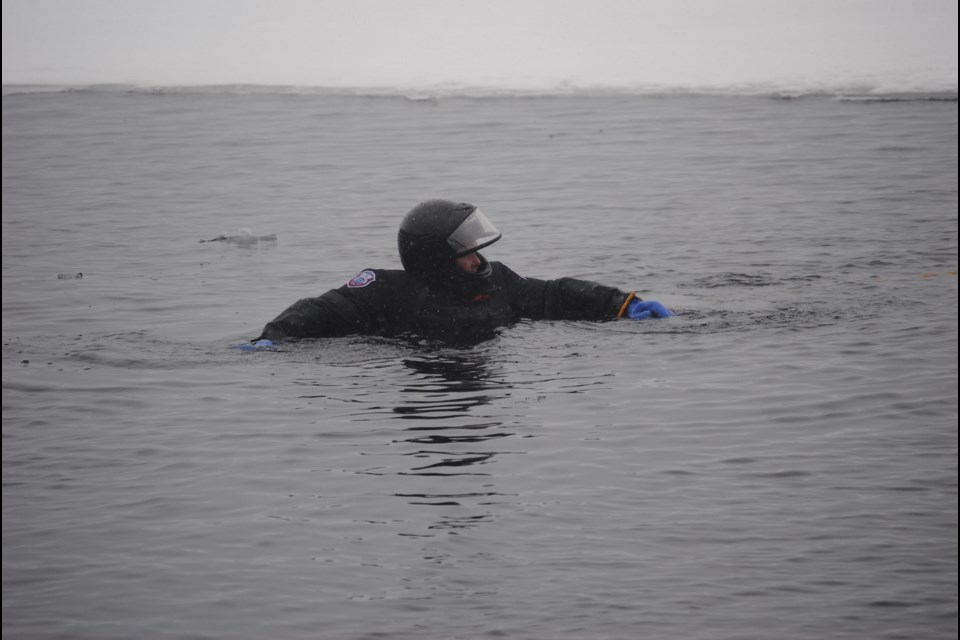Unless you are in a polar bear club, on a cold winter's day or night, one of the last places anyone wants to find themselves is in a lake or river.
Despite warnings about unstable ice conditions, pressure cracks or un-staked snowmobile trails, outdoor enthusiasts inevitably end up neck deep in freezing water and fighting for their lives.
Thursday, off the shore of Trout Lake, members of the North Bay Fire and Emergency Services (NBFES), in conjunction with police and fire departments from the surrounding areas, played the part of both victim and rescuer in a training exercise to improve the ice water rescue skills necessary to save the lives of those who find themselves in these deadly situations.
NBFES rescuers were trying out a new tool in their repertoire, a rapid deployment craft or RDC (pictured above). The craft is designed to remain floating upright to aid firefighters in pulling victims from icy lakes or rivers without having to enter the water themselves.
The fewer people in the water the better, as entering the water with a struggling victim who is treading water can endanger the rescuer as well. The firefighters position the yellow rescue craft toward the feet of the swimmer in distress, and "flop" them through the opening where the bottom and end of the boat split. The boat can then be quickly pulled to shore using a rope pulled by the crew stationed on shore or standing on the ice.
Firefighter and trained ice-water-rescuer Derrick Desilets of NBFES says the team trains to build skills that they hope they never have to use, but that "this is an important skill to have in North Bay with all of the surrounding lakes," said Desilets.
With all of the drastic "temperature changes nowadays as opposed to 10 or 20 years ago, it's a big difference too, where there's a lot more open ice, the ice isn't freezing as well as it used to. January used to be the coldest month of the year, and look at it right now (0 C Thursday)," added Desilets.
The training exercise included scenarios involving one snowmobiler in the water alone, as well as an exercise in which two snowmobilers had gone through the ice and had been separated, forcing the rescuers to assess the situation and decide which victim needed to be rescued first.
Desilets warned people who like to get out on the lake to be vigilant. "Ice conditions are very dangerous. Everyone wants to get out and play, but you have to be very careful. If you go through the ice, you don't have a lot of time. You have a 'golden hour' we call it, where you can hold on to the edge of the ice and survive. You can get into a hypothermic state after only 10 minutes."



